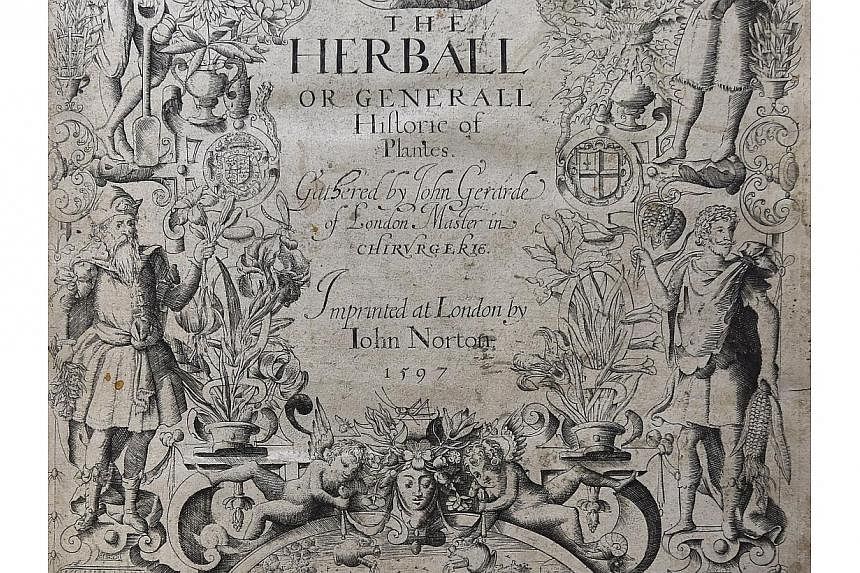LONDON (AFP) - A British historian announced Tuesday he had discovered the only portrait of William Shakespeare made while the famous playwright was alive, a claim met with scepticism by some.
The portrait showing a young and handsome figure was found by botanist and historian Mark Griffiths in a 1,484 page book on plants, The Herball, from the 16th century.
"This is the first time that we have a portrait of him that is identifiable as him, that is done in his lifetime," said Mark Hedges, editor of Country Life magazine where an article outlining the discovery is to be published on Wednesday.
"The only two other authentic portraits of Shakespeare were both done posthumously. So this is an enormous world breakthrough to find out what the most famous writer in the English language looked like."
The print, which Griffiths says shows Shakespeare aged 33, portrays four people previously thought to be imaginary figures.
Griffiths argues the figures are real people, with the flowers and plants around them a code revealing their true identities, a kind of riddle popular in the time of Queen Elizabeth I.
Shakespeare is identifiable because he is dressed as a poet and holds a fritillary and sweetcorn, plants which Griffiths argues point to his poem Venus And Adonis and his play Titus Andronicus.
A laurel wreath worn by Shakespeare indicates the classical poets who inspired him, and a Latin cipher below the portraits reads "William Shakespeare" when decoded, Griffith said.
He identified the three other figures as the book's author John Gerard, renowned Flemish botanist Rembert Dodoens, and Queen Elizabeth's Lord Treasurer, Lord Burghley.
Some experts remained cautious about the claim.
"I'm deeply unconvinced. I haven't seen the detailed arguments but Country Life is certainly not the first publication to make this sort of claim," said Professor Michael Dobson, director of the Shakespeare Institute at the University of Birmingham.
"I can't imagine any reason why Shakespeare would be in a botany textbook."
But Griffiths defended his work as solid.
"I first made the identification five years ago and I have been trying to disprove it ever since," Griffiths said.
"Everything I say is based on hard, documentary, historical evidence or scientific evidence. I'm not interested in fantasising about William Shakespeare. I am interested in accounting for facts."


